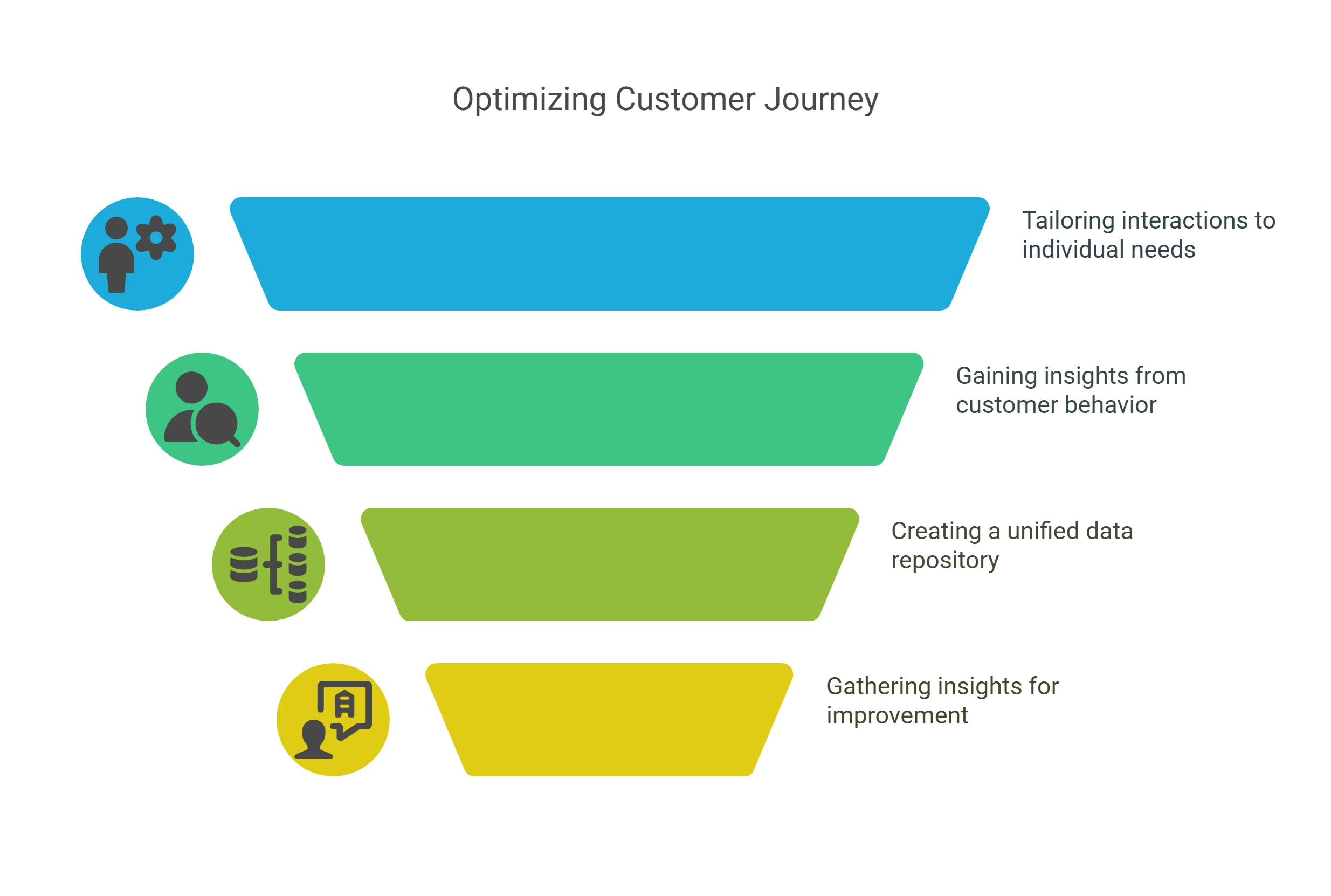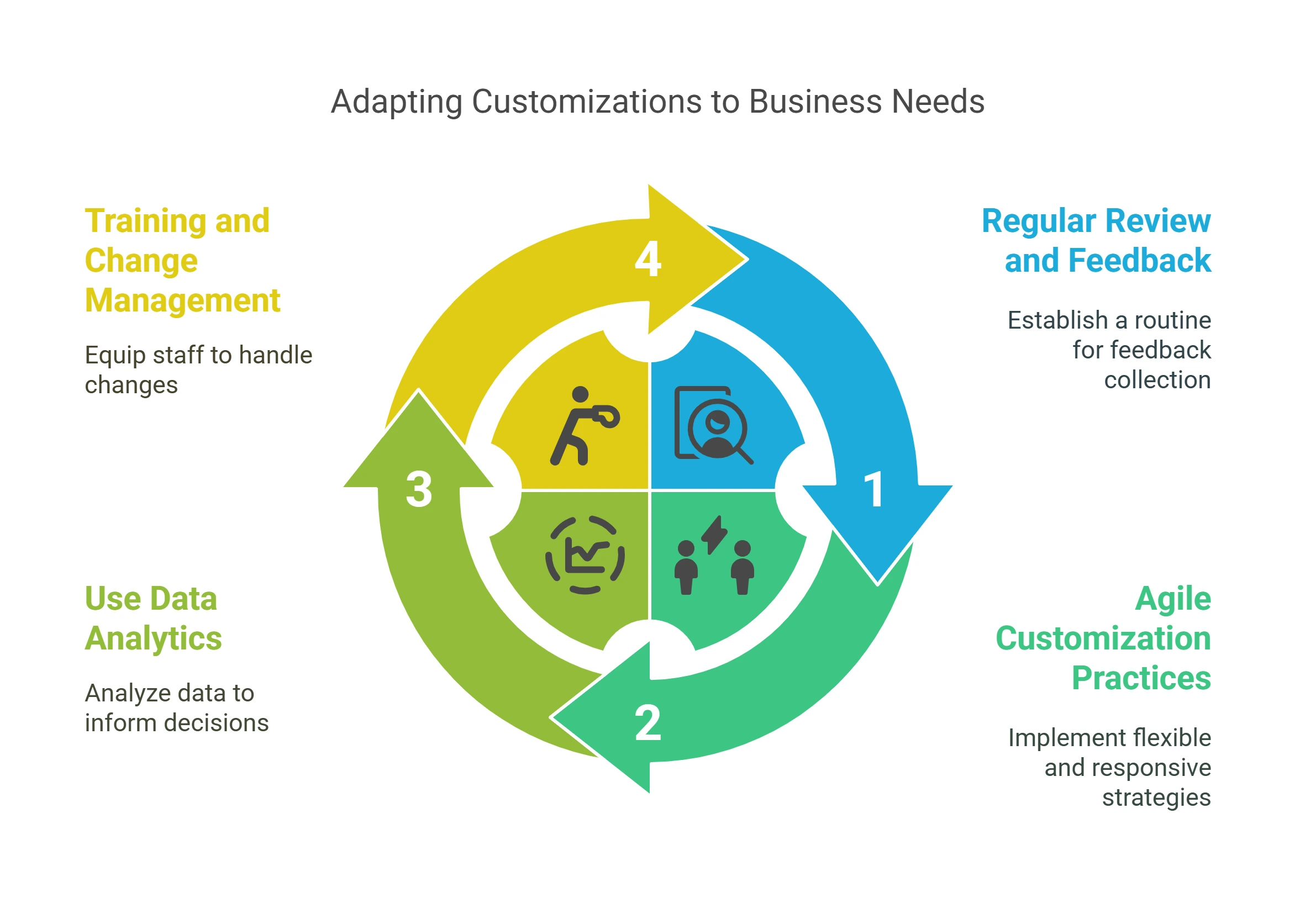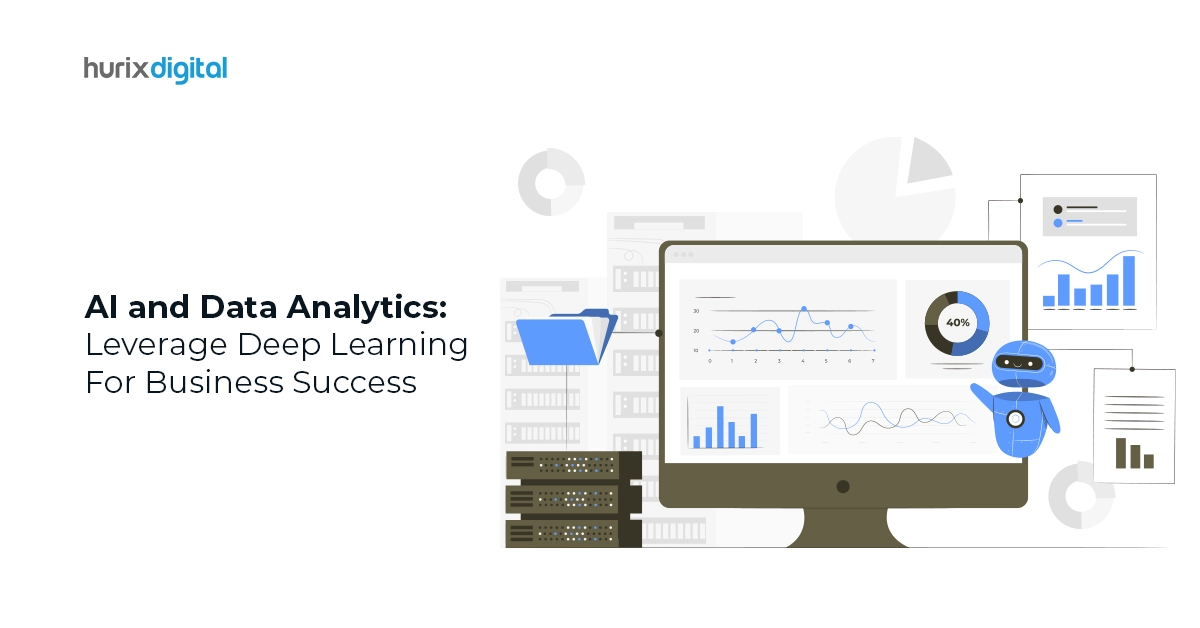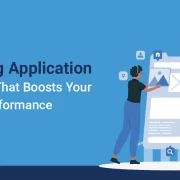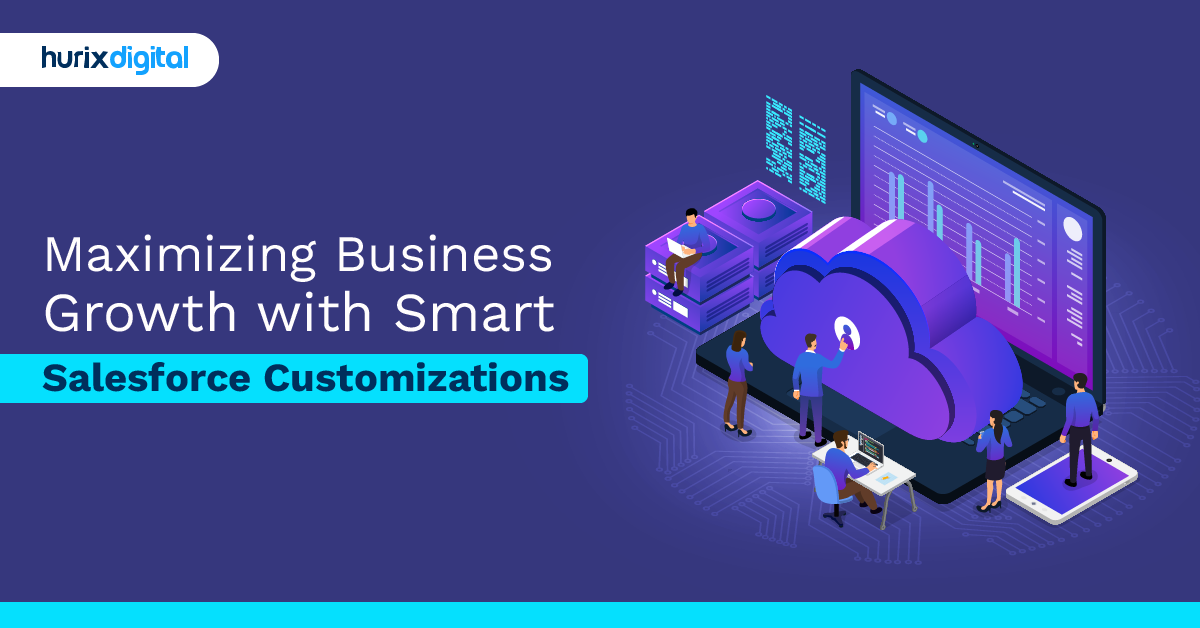
Maximizing Business Growth with Smart Salesforce Customizations
Summary
Salesforce Marketing Cloud empowers businesses with automation, audience segmentation, analytics, and multichannel marketing to boost ROI. Scalable customizations enhance adaptability, while seamless integrations streamline workflows. By leveraging predictive analytics and personalization, businesses can optimize customer journeys and drive growth. Partnering with Hurix Digital ensures efficient implementation and maximized Salesforce ROI.
Salesforce is the cornerstone of business growth, with unparalleled efficiency in maintaining customer relationships and operations.
The real power of Salesforce is its adaptability, so businesses can tailor it to respond to their needs. According to a report, companies that use custom Salesforce solutions register an average 25% increase in revenue and a 35% increase in customer satisfaction.
Salesforce Marketing Cloud features an expansive toolset to improve marketing, help businesses enhance their campaigns, and boost ROI. From the best marketing automation with Salesforce to creating customer cohorts, this cloud is an all-in-one business solution.
Let’s explore how businesses can improve their marketing ROI and grow profits with Salesforce Marketing Cloud features.
Table of Contents:
- What is Salesforce Marketing Cloud?
- Salesforce Marketing Cloud Features That Enhance Marketing ROI
- Tips for Customer Journey Optimization
- Understanding Scalable Salesforce Customizations
- Best Practices for Salesforce Integration
- Challenges of Scaling Legacy Salesforce Customizations
- Five Methods for Enhancing Scalability
- Adapting Customizations to New Business Needs
- Power Your Integrations and Technologies With Hurix Digital
What is Salesforce Marketing Cloud?
Salesforce Marketing Cloud is an all-in-one digital marketing solution with an excellent toolset and functionalities to catalyze marketing operations. It lets businesses get a bird’s-eye view of their customers and audience, enhancing customer satisfaction and targeted marketing campaigns.
Salesforce Marketing Cloud provides several marketing benefits to businesses. According to a study published by Forrester, here are some significant demographics:
- An increase of over $5 million in incremental revenue across marketing channels.
- Conversion rate enhancements of about 60% by the third year.
- Increase in average order value by about 35% by the third year.
- Time savings of about 60% while creating and running marketing campaigns.
- Reduction in reporting efforts for marketing campaigns by 90%.
The most important highlight of this study is that the businesses that deployed Salesforce Marketing Cloud realized a composite ROI of 299% over three years.
Salesforce Marketing Cloud Features That Enhance Marketing ROI
Salesforce Marketing Cloud provides well-rounded and balanced features to help you enhance the ROI from your marketing campaigns:
1. Automated Campaigns
Salesforce Marketing Cloud has automation capabilities that empower businesses to make efficient marketing efforts to bring more traffic to their brand. You can create campaigns triggered on the platform through specific user actions (like clicking on a link in the brand email or responding to an SMS).
This feature can be useful for cart recoveries, where users put items in their carts but forget to checkout, leading to maximum profits from the website.
2. Audience Segmentation
Businesses must thoroughly understand their audience to design targeted and personalized marketing campaigns. For this purpose, Salesforce Marketing Cloud provides audience segmentation based on age, gender, nationality, demographics, etc.
You can then use the Audience Builder feature to generate targeted campaigns considering audience preferences in a particular customer segment.
3. Campaign Performance Monitoring
Analytics help you measure the performance of your campaigns. Using marketing analytics with Salesforce, you can monitor the performance of your marketing initiatives. This feature enables you to identify which campaigns are successful, which require fine-tuning, and which aren’t working.
By identifying the successes and challenges, you can design marketing campaigns that are highly synchronized with demands to enhance ROI.
4. Multichannel Marketing
The modern customer is smart and prefers convenience over everything else. As a business, it is important to provide your services or products to customers wherever they are, whether on mobile phones, web browsers, or apps.
Salesforce Marketing Cloud enables you to generate multichannel marketing campaigns that reach your customers where they spend the most time. By engaging with your customers on their favorite channels, you enhance your marketing’s ROI.
5. Predictive Analytics
The success of a marketing campaign depends on how it is performing today, and predictive analytics play a crucial role here. For businesses, it is important to predict the success of a lead to better prepare downstream processes (like inventory and stock) for potential incoming demand.
SFMC provides features that help nurture leads and schedule follow-ups, allowing you to allocate resources to leads that are more likely to convert.
Tips for Customer Journey Optimization
Let’s take a look at a few tips you can use to enhance customer journeys using Salesforce Marketing Cloud:
1. Personalize for Customers
Enhanced personalization helps businesses connect with customers on a more human, personal level. This personal touch is important for customers to take certain actions that trigger further marketing campaigns. It improves business profitability by building a bond between customers and businesses.
2. Analyze Customer Data
SFMC gives you access to invaluable customer data. This data can generate key insights (like preferences, shopping patterns, average order value, preferred shopping times, etc.) that help create more targeted marketing initiatives.
Analytics features also help you predict your customers’ future activities to improve sales continuously with each customer.
3. Establish a Single Source of Truth
SFMC takes care of all your marketing data in one place, making it the single source of truth for any marketing-related data or information you require. It helps you create a holistic view of your customers with all their data in one place.
You can design more specific marketing campaigns and offers for high-value customers and increase sales.
4. Encourage Feedback
SFMC has built-in features that allow you to catch customer signals (positive, negative, happy, angry, etc.) through their interactions with the brand. You can invite feedback to help SFMC learn these signals and adjust customer messaging to reflect the sentiment.
Understanding Scalable Salesforce Customizations
Scalability in the context of Salesforce customization refers to the ability to expand or modify customizations efficiently as business needs grow or change. This ensures that the existing system’s performance is not disrupted.
This concept is essential for organizations looking to leverage Salesforce as a platform that can evolve with them over time.
Here are essential insights on scalability that can transform your Salesforce environment:
- Foundation for Growth: It is crucial to start with a scalable Salesforce framework. This setup ensures that as the organization grows, the Salesforce environment can adapt without extensive rework.
- Proactive Planning: Beginning with a scalable architecture is less costly and more effective than retrofitting scalability into existing customizations.
- Flexible Frameworks: Implementing scalable customizations involves using flexible frameworks that support modular enhancements. This approach allows businesses to add or modify functionalities as needed without overhauling the entire system.
- Integration and Adaptability: Scalable customizations facilitate smoother integrations with other systems and new modules. This adaptability is essential for maintaining system integrity and ensuring continuous improvement in response to new business challenges.
Best Practices for Salesforce Integration
The integration of Salesforce with other business systems is the key to efficiency and scalability. An integration should be planned to streamline processes and improve data flow. Most importantly, it should ensure that the Salesforce environment scales as business needs change.
Here are some key strategies for successful integration of Salesforce with business systems:
1. Unified Data Management
Centralizing data management across your business through Salesforce integration can reduce duplication and errors. With data-system integration, organizations can more easily access information that allows them to make better decisions. This unified approach also enhances data consistency, enabling more accurate reporting and analysis across departments.
2. Automated Workflows
The integration will result in automated workflows between Salesforce and other systems. This means that data is moved and processed without human intervention, making it less error-prone and faster.
Automating workflows also frees up valuable time for employees. This allows them to focus on more strategic tasks rather than manual data entry and processing.
3. API-Led Connectivity
Use API-based connectivity to establish orderly connections between Salesforce and other business applications. This approach supports real-time data sharing and scales with natural changes in business needs.
Additionally, API-led connectivity provides the flexibility to integrate new applications and services as your business grows, ensuring long-term adaptability.
4. Strategic Middleware Deployment
Use middleware solutions to allow for complex integrations, especially when it comes to legacy systems. Data flow management is more effective, ensuring that information is accurate and timely in all systems. Middleware also acts as a bridge between disparate systems, enabling seamless communication and reducing the risk of integration failures.
Challenges of Scaling Legacy Salesforce Customizations
Scaling up legacy Salesforce customizations presents unique challenges that can hinder business agility and growth. Understanding these issues and employing strategic restructuring methods can enhance scalability:
- Incompatibility with New Features: Older customizations may not be compatible with newer Salesforce updates, leading to functionality gaps. This can prevent the organization from fully leveraging the latest tools and features Salesforce offers.
- Performance Bottlenecks: Legacy customizations often involve complex processes that are not optimized for current data volumes. This can result in slow performance and system crashes.
- Maintenance Complexity: As customizations age, they often require more effort to maintain and update, increasing the risk of errors and security vulnerabilities. This added complexity can also lead to higher maintenance costs and longer downtimes.
- Technical Debt: Technical debt often accumulates from outdated or poorly documented customizations, creating challenges for the development team. This can create obstacles when trying to implement new features or integrate with modern systems.
- Security Risks: Legacy systems are often more vulnerable to security threats due to outdated coding practices or a lack of recent updates. This can expose the organization to data breaches or compliance issues, particularly as regulations evolve.
Five Methods for Enhancing Scalability
To address these challenges effectively, a range of strategies can be implemented to enhance scalability and performance.
- System Audit and Assessment: Conduct a comprehensive review of existing customizations to identify inefficiencies and areas for improvement. This assessment should prioritize compatibility with current and future Salesforce releases.
- Refactoring Customizations: Where feasible, refactor or rebuild customizations to align with modern practices. This may involve transitioning to Salesforce’s Lightning platform, which offers enhanced scalability and support for continuous updates.
- Reducing Technical Debt: Focus on reducing technical debt by refactoring outdated code, ensuring that the system meets modern standards. Additionally, improve the overall architecture of the Salesforce environment to enhance performance and ease future scaling efforts.
- Implementing Modular Design: Adopt a modular design approach that allows parts of the Salesforce system to be updated or replaced independently. This facilitates easier scaling and maintenance.
- Strengthening Security Measures: Implement modern security practices and regular audits to ensure that legacy customizations meet current security standards. This will protect the organization from potential vulnerabilities as it scales.
Adapting Customizations to New Business Needs
As businesses evolve, Salesforce customizations must also advance. Business goals change with time, so configuring Salesforce to support such changing goals is important to sustain competitiveness and operational efficiency.
Some ways to ensure needs are always met by Salesforce customizations include:
1. Regular Review and Feedback Loops
Salesforce customizations should be reviewed consistently with strategic business reviews. This will ensure constant alignment of the system with current affairs pertaining to business situations.
2. Agile Customization Practices
Bring agility into the customization practices and open up space for iterative and incremental improvements. Such an approach could let organizations easily accommodate dynamic business environments and incorporate all the new features.
3. Use Data Analytics
Leverage data analytics to measure the effectiveness of Salesforce customizations. Analytics insights can then guide decisions on necessary modifications or additions, ensuring the customizations continue to support operational needs effectively.
4. Training and Change Management
Equip your team with the necessary training on the latest Salesforce features and best practices. Comprehensive training ensures that all users can maximize the benefits of new customizations and adapt to changes smoothly.
Power Your Integrations and Technologies With Hurix Digital
Salesforce Marketing Cloud is a capable platform that can help you enhance your marketing ROI in a few simple steps. The more you use it, the more it attunes to your working patterns, generating better insights every time.
Understanding its beneficial features and the tips mentioned above for a better customer journey can help you improve your business growth for better profits.
By prioritizing scalability, you can ensure enhanced flexibility and efficiency. Scalable customizations adapt seamlessly to evolving business needs, ensuring your Salesforce setup remains relevant and effective. This approach streamlines processes and reduces the need for frequent overhauls, boosting your overall ROI.
For CIOs looking to future-proof their Salesforce investment, prioritizing scalability is essential. By choosing scalable solutions from the start, you can ensure your business stays agile and prepared for future changes.
If you wish to integrate this platform with your systems, you can partner with a reliable technology company like Hurix Digital. At Hurix Digital, we help businesses with seamless integrations and the implementation of solutions with custom configurations.
Learn how Hurix Digital can maximize your ROI. Schedule a call with us today!

Currently serving as the Vice President of Technology Delivery Operations at HurixDigital, a prominent global provider of digital content and technology solutions for publishers, corporations, and educational institutions. With over 16 years of experience spanning EdTech and various domains, I hold certification as a SCRUM Product Owner (CSPO). My expertise includes operations, finance, and adept people management skills.
